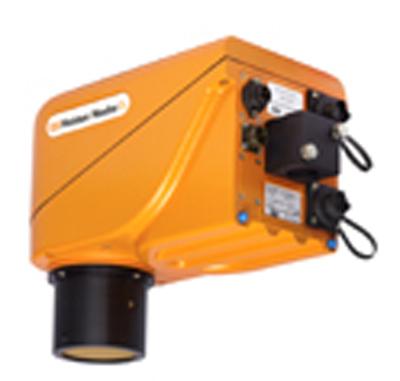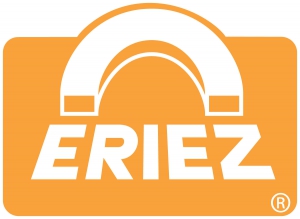
Eriez introduces the Moisture Monitor. This non-contact electronic scanning device, part of the company's new SMART (System Monitoring and Reporting Technology) product line, helps to prevent excessive water content in recycling processes to increase metals recovery and decrease costs.
Eriez' Moisture Monitor measures the water content of material passing through its inspection field. When installed on a conveyor, it reports the moisture content of the material on the belt as a percentage that can be read locally or remotely via the Eriez Metal Loss Monitor (MLM) web portal.
Mike Shattuck, Eriez Market Manager-Metals Recycling, explains, "This capability is particularly beneficial to the recycling industry as it enable users to better optimize the amount of water injected into the mill to prevent fires and control airborne dust generation. The mill operator is able to assure sufficient water injection while preventing excessive water content which would interfere with separation, increase metals losses and increase costs due to the added water weight of reject material sent to the landfill."
The Moisture Monitor is an easy to operate, hands-off gage. Upon installation, simply adjust to zero and put the gage to work. There is no routine maintenance or recalibration. Calibration check standards are available for confirmation of long-term gage stability.
Contact Details
Related Glossary Terms
- calibration
calibration
Checking measuring instruments and devices against a master set to ensure that, over time, they have remained dimensionally stable and nominally accurate.
- milling machine ( mill)
milling machine ( mill)
Runs endmills and arbor-mounted milling cutters. Features include a head with a spindle that drives the cutters; a column, knee and table that provide motion in the three Cartesian axes; and a base that supports the components and houses the cutting-fluid pump and reservoir. The work is mounted on the table and fed into the rotating cutter or endmill to accomplish the milling steps; vertical milling machines also feed endmills into the work by means of a spindle-mounted quill. Models range from small manual machines to big bed-type and duplex mills. All take one of three basic forms: vertical, horizontal or convertible horizontal/vertical. Vertical machines may be knee-type (the table is mounted on a knee that can be elevated) or bed-type (the table is securely supported and only moves horizontally). In general, horizontal machines are bigger and more powerful, while vertical machines are lighter but more versatile and easier to set up and operate.
- recovery
recovery
Reduction or removal of workhardening effects, without motion of large-angle grain boundaries.
- web
web
On a rotating tool, the portion of the tool body that joins the lands. Web is thicker at the shank end, relative to the point end, providing maximum torsional strength.

